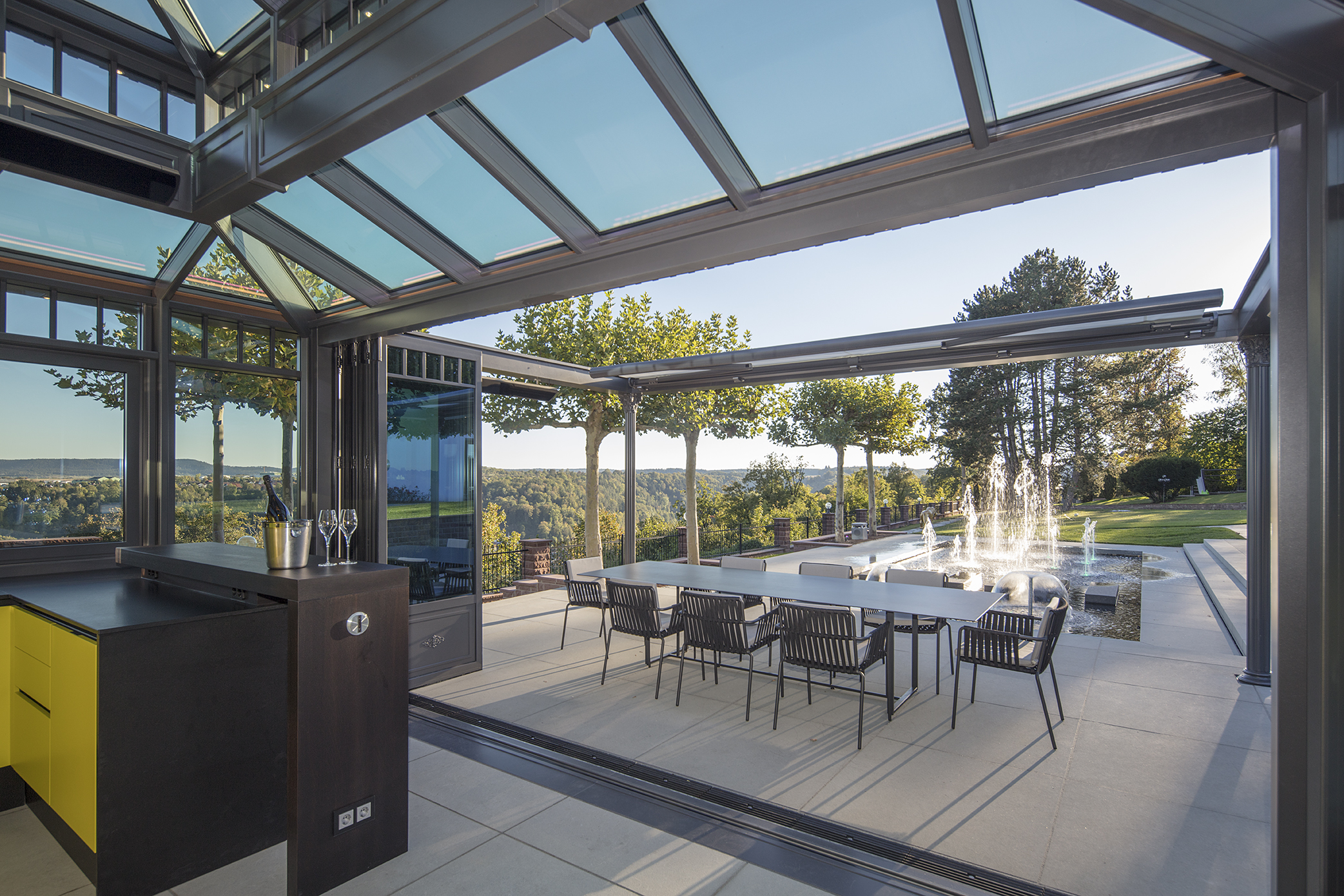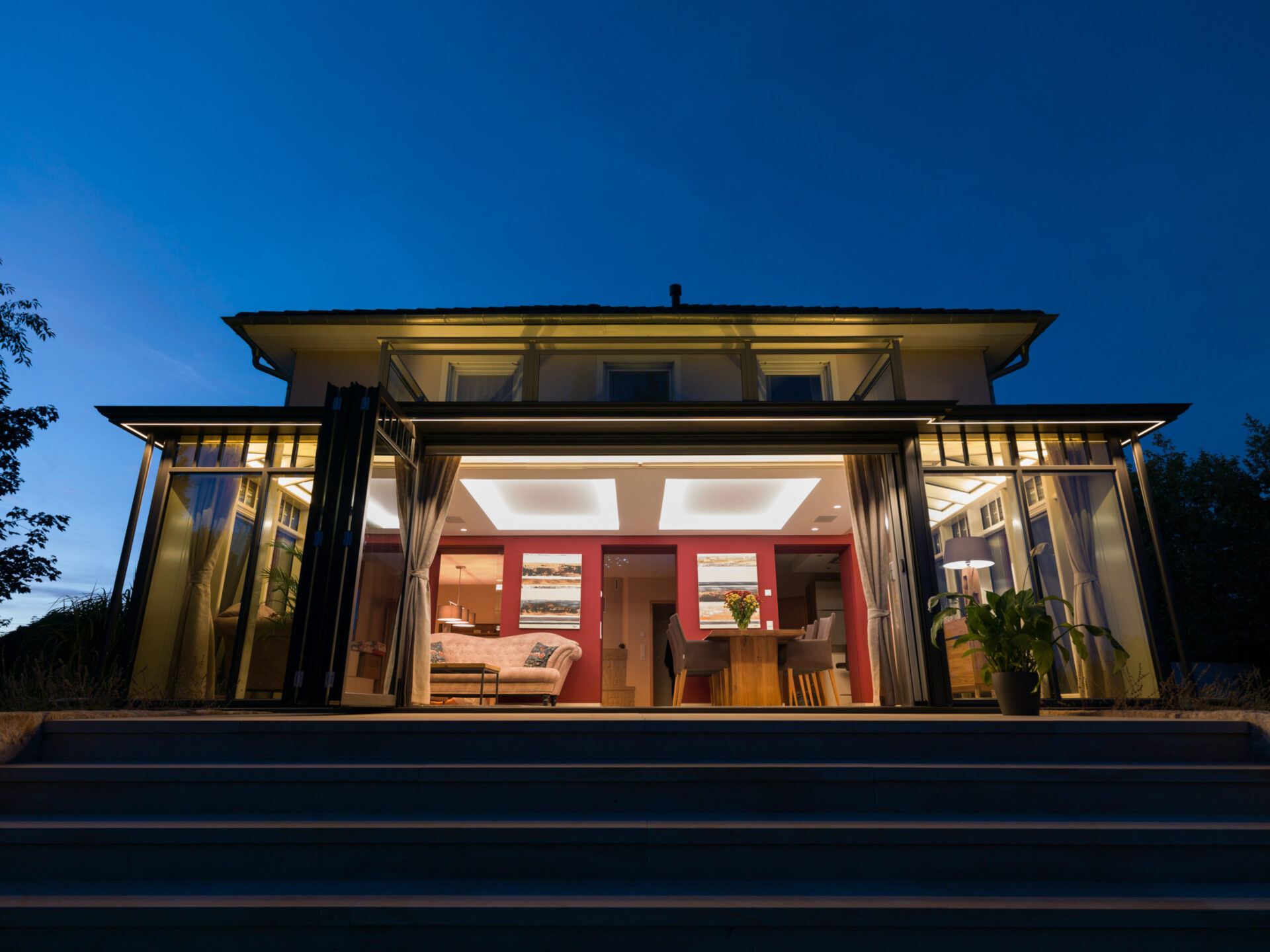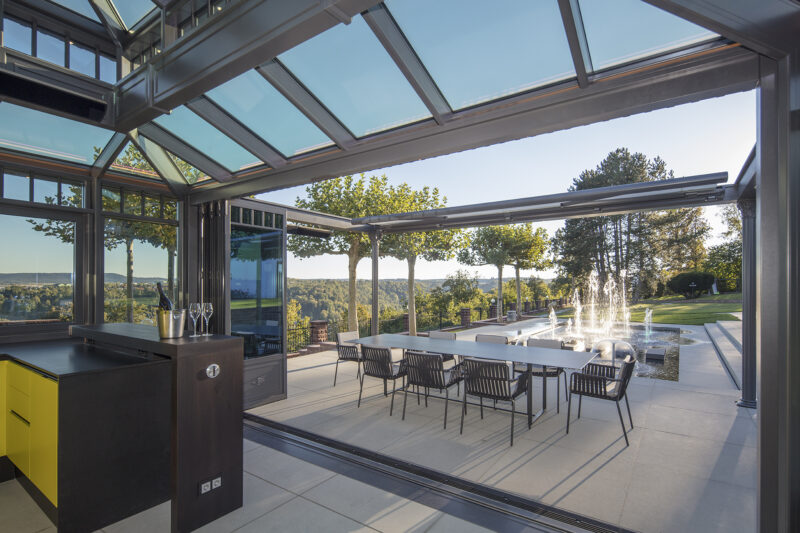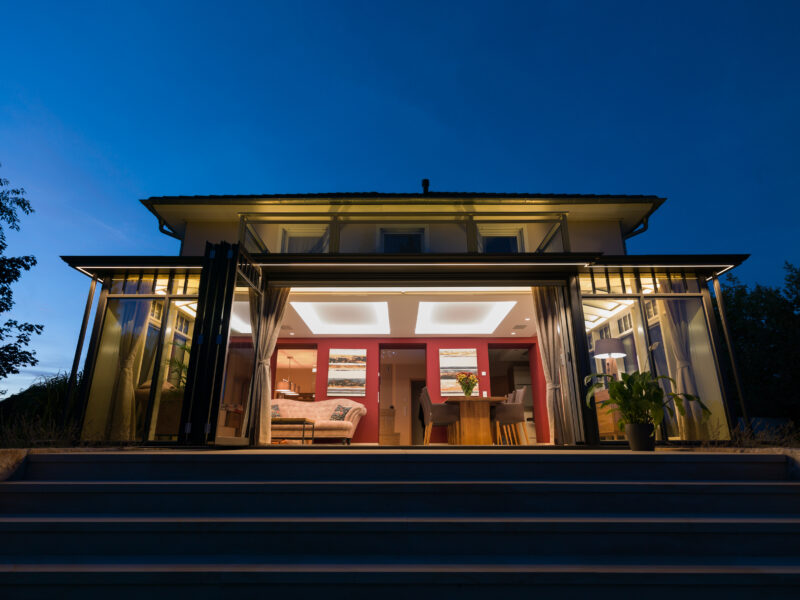


Three good reasons for a conservatory
Today, a well-planned conservatory is much more than the “glazed” terrace of the 1970s. It is a complex system for the passive use of solar energy that acts as an upstream climate buffer for the house, saving a lot of heating energy. A conservatory is a simple way of increasing the available living space and makes it possible to sit “outside” in the garden a few weeks earlier in spring. For conservatory owners, the “end of the summer season” is extended into the fall, as the slowly lowering sun still has enough power to ensure pleasant temperatures in the conservatory even on cooler days.
The thermal effect of the conservatory is largely dependent on its glazing. The larger the glazed area, the more passive energy gains are generated. This even works in winter on sunny days. The sun is then low and shines intensively into the vertical glass surfaces. Glazing with a relatively high g-value and effective thermal insulation should therefore be used here. The triple thermal insulation glass iplus 3LS from AGC Interpane, for example, offers excellent thermal insulation with a high solar energy input. Despite its inexpensive argon noble gas filling, it achieves a thermal insulation value of 0.7 W/m2K (in accordance with EN 673), generates solar energy gains with a g-value of 62 percent and floods the conservatory with plenty of visible daylight (light transmission = 72 percent). The sun’s warming rays therefore pass through the glass relatively unhindered, while the “return path” for the heat is blocked. A pleasant side effect is a high level of comfort, as the room-side pane remains close to the inside temperature even at cold outside temperatures.
Different rules apply to the glazing in the roof of the conservatory, as it is mainly exposed to the high summer sun – solar control is essential here and laminated safety glass is mandatory. Highly selective products such as ipasol ultraselect 62/29, which emit a lot of visible daylight (62 percent) and reduce the heating of the conservatory in summer thanks to a neutral solar control coating (g value = 29 percent), are of interest. Long-wave (warming) sun rays are therefore reflected, visible short-wave daylight is desired and is let in. In winter, an iplus thermal insulation coating also protects the room from cooling down.
However, how much heating energy a conservatory saves depends not only on the glazing, but also on the correct integration into the building volume and the ventilation of the rooms behind it. Incoming sunlight is absorbed by floors, walls and furniture and converted into heat. This heat is transferred to the adjoining rooms, reducing the heating requirement in winter and maintaining a medium temperature level all year round. Transmission and ventilation heat losses are reduced. On hot summer days, cross ventilation prevents rooms from overheating: Air flowing in at the bottom through supply air openings rises as it heats up and is directed outside again at the top through sliding roof systems or other exhaust air openings. The opening area in the roof should allow up to 50 air changes per hour without disruptive draughts and must be sufficiently dimensioned for this. In summer, well thought-out shading is also important. The following rule applies: external sun protection measures, such as deciduous trees in the garden, are more effective than internal roller blinds or venetian blinds because the sun does not even enter the room. In summer, the canopy of leaves provides shade; in the fall, when the leaves have fallen, the sun can shine in again unhindered.
Public relations
DownloadsDownload all
 Premium suppliers such as the conservatory manufacturer Vowisol also offer special versions for upmarket hotels and historic buildings.
Premium suppliers such as the conservatory manufacturer Vowisol also offer special versions for upmarket hotels and historic buildings.
Photo: Vowisol conservatoriesJPEG | 2.06 MB | 2085px x 1390px Premium suppliers such as the conservatory manufacturer Vowisol offer modern conservatories, e.g. for architect-designed houses.
Premium suppliers such as the conservatory manufacturer Vowisol offer modern conservatories, e.g. for architect-designed houses.
Photo: Vowisol conservatoriesJPEG | 4.12 MB | 4724px x 3543px
Copyright notice
Reprint free of charge
Specimen copy requested
AGC Interpane holds all rights to the images in this press section/image database. AGC Interpane permits the use of these images without compensation only when used for their reproduction and dissemination for editorial and press purposes. The images may only be used when shown together with the proper placement/printing of the copyright note “Photo: AGC Interpane”. If an image features a copyright note other than this one, that respective note must be used instead. Any other use of the images, especially their sale and use for advertising purposes, is strictly prohibited. Voucher copy requested.